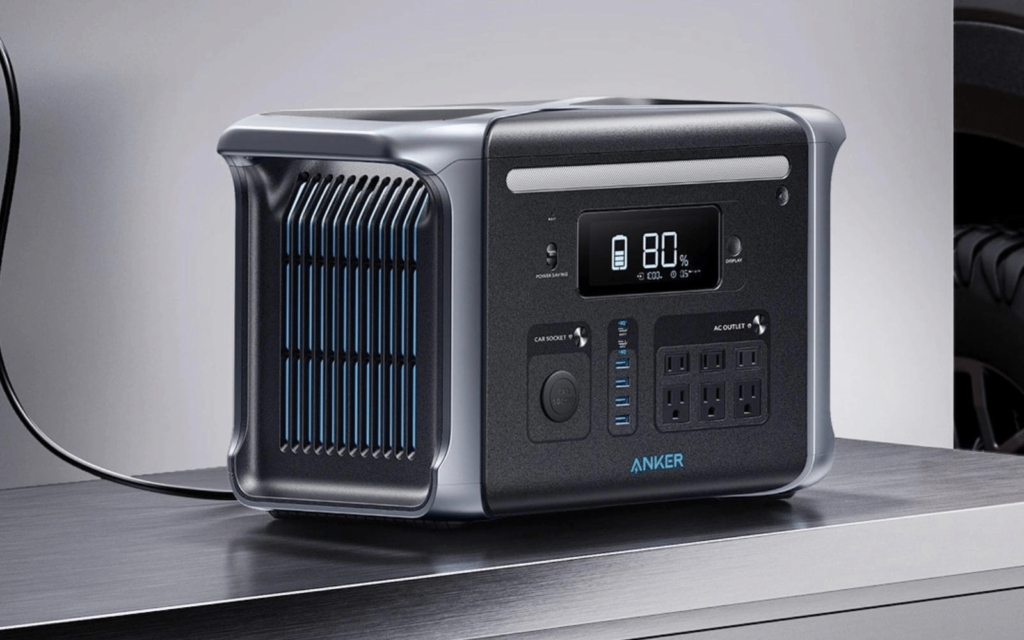Don’t you hate it when you’re finishing up the latest hit show on Netflix and load shedding suddenly strikes? Us too. If you’re lucky enough to lay hands on Anker’s 757 Powerhouse, this scenario becomes nothing more than a bad dream.
The bad news is that Anker hasn’t said (yet) whether its 757 Powerhouse will ship to South Africa. We’re awfully keen on seeing it in person, for electricity reasons
Anker’s 757 Powerhouse boasts some great specs. There’s 1,500W of power and 1,229Wh of capacity contained within its Lithium Iron Phosphate (LiFePO4) battery. Anker promises that the Powerhouse’s battery charges faster, lasts longer, and may be safer than its lithium-ion-using competition.
The 757 can power almost any needs your home has. Your TV will run for nine hours, lightbulbs for 82 hours and if you really need a caffeine kick, a coffee machine can be used for an hour. A coffee machine or, worse, an electric kettle, is one of the biggest power draws in a home. An hour is plenty of time to make your coffee, instead of racing to MacDonalds the second the power goes out.
Weighing up your options
The 757 Powerhouse isn’t exactly light. Weighing in at 20kg, the 757 offers a workout as much as it offers an easy solution to your power needs. But there are a few downsides to the device as well. The American version is the only one announced, which makes it pretty useless here at home. The port layout gives some idea what a UK or European version (the one we’re most likely to see) will involve.
Anker’s monster battery pack includes dual USB-C ports, four USB 3.0 connectors, a 12V car-charging socket, and then six different AC plugs. It’s these that make the Powerhouse a little useless — as with Goal Zero’s Yeti kit, South Africans don’t use these formats. Plus, the voltage is all wrong.
Anker apparently feels that the benefits of LiFePO4 batteries outweigh the drawbacks here. They tend to be heavier than lithium-ion, sure, but they also take more charge cycles to degrade. Anker claims that the 757 will charge to a full 100% even after hitting 3,000 charge cycles.
They’re also less likely to combust, which is what you want from the 20kg, 1,229Wh battery sitting in your lounge. They’re also quicker to charge up. Some overdeveloped forearm muscles might be a small price to pay. We say ‘overdeveloped’ because Eskom will have you moving it back and forth fairly often.
Anker includes solar charging, claiming an 80% charge in just under four hours. There are probably a few terms and conditions there — the solar charging gear needs to meet a certain standard. Still, quite a handy feature for those that spend a lot of their time in the great outdoors. Odds are if you have solar at home, you probably don’t need one of Anker’s 757 Powerhouse units.
Everyone else, though? Yeah, they probably need (or want) one. Thanks a lot, Eskom.




